Global Market Comments
October 20, 2021
Fiat Lux
Featured Trade:
(THE HARD TRUTH BEHIND BUYING IN NOVEMBER)
(NOTICE TO MILITARY SUBSCRIBERS)

Global Market Comments
October 20, 2021
Fiat Lux
Featured Trade:
(THE HARD TRUTH BEHIND BUYING IN NOVEMBER)
(NOTICE TO MILITARY SUBSCRIBERS)

Global Market Comments
October 19, 2021
Fiat Lux
SPECIAL BITCOIN ISSUE
Featured Trade:
(WHERE DOES BITCOIN GO FROM HERE?)
($BTCUSD), (ETH), (CRPT), (BLOK), (MSTR)

I first got involved with bitcoin in 2011, when a subscriber wanting to thank me for a spectacular investment performance GAVE me ten Bitcoin. They were then worth $1 each.
Then, I forgot about them. When they appreciated to $100 in 2013, I decided to sell them and take the family out to dinner at The French Laundry, the best restaurant in California’s Napa Valley. I thought I was a genius.
Back then, early in the life of Bitcoin, theft was rampant, and exchange regularly went bankrupt. So cashing in on my windfall wasn’t such an unreasonable thing to do.
That turned out to be the most expensive dinner of my life. If I had kept the ten Bitcoin, they would be worth today over $600,000. Maybe I’m not such a genius after all.
Unless you have been living in a cave for the past five years, you have probably heard of Bitcoin.
By now, you have decided that it is the greatest money-making opportunity of all time or the greatest scam since Carlo Ponzi amassed a fortune selling international postal coupons in 1922.
Some things are certain. Bitcoin will change the financial system beyond all recognition. It will revolutionize banking and investment. And it will vastly accelerate the digitization of the global economy to everyone’s benefit.
After reading this book, you may or may not want to invest in Bitcoin. However, a working knowledge of what it is and how it works will become essential for everyone as the 21st century unfolds.
For s start, Bitcoin, other cryptos, and future cryptos yet to be invented will save $1 trillion a year in transaction costs in the global economy. Who will be the beneficiary of this bounty? You, me, and all the companies we invest in.
It is certain that some form of current or future crypto will be a stepping stone to a global digital currency, not just for emerging nations like El Salvador, but all nations.
And here is the most interesting thing. The eventual impact of crypto on our lives hasn’t even been imagined yet.
Going back to my Defense Department days, I was one of a handful who was present at the birth of the Internet and the similarities are legion. A few clever people were aware of bits and corners of the Internet back in 1989, but nobody had a big picture.
Long term predictions might as well have been science fiction. Insiders were buying up domain names for a dollar each, such as Mcdonalds.com, whitehouse.com, and sex.com. The MacDonald’s site was later sold to the fast-food company for $10 million.
When the Internet began mass adoption in 1995, no one imagined that every taxi company in the world would be out of business in 15 years. New York City taxi medallions once worth $1 million became worthless, prompting many suicides.
Nor did prime downtown apartment owners all over the world expect they could rent their homes for astronomical daily rates through Airbnb (ABNB). They didn’t even expect that a small startup named Netflix (NFLX) would stream videos online, wiping out Blockbuster Video.
Bitcoin was created by Satoshi Nakamoto, a pseudonymous person or team who outlined the technology in a 2008 white paper. Nobody knows for sure. It might even be a US government agency that invented Bitcoin. It’s an appealingly simple concept: bitcoin is digital money that allows for secure, trustless, peer-to-peer transactions on the internet.
Unlike other payment services, like PayPal’s Venmo (PYPL), which rely on the traditional financial system for permission to transfer money and on existing debit/credit accounts, bitcoin is decentralized: any two people, anywhere in the world, can send bitcoin to each other without the involvement of a bank, government, or other institution.
Every transaction involving Bitcoin is tracked on the blockchain, which is like a bank’s ledger, or log of customers’ funds going in and out of the bank. In simple terms, it’s a record of every transaction ever made using bitcoin. Think of blockchain as a chain of blocks of code, each one of which contains millions of lines of code.
Unlike a bank’s ledger, the Bitcoin blockchain is distributed across the entire network. No company, country, or third party is in control of it; and anyone can become part of that network. The Mad Hedge Fund Trader is part of that network, otherwise known as a “node.”
There will only ever be 21 million Bitcoins. This is digital money that cannot be inflated or manipulated in any way.
It isn’t necessary to buy an entire bitcoin: you can buy just a fraction of one if that’s all you want or need. To open my own crypto wallet, I started with an initial buy of one ten thousand of a Bitcoin, or $10. Now, I’m trading in the millions.
Whatever the outcome of Bitcoin is, one thing is certain. None of our lives will be the same.
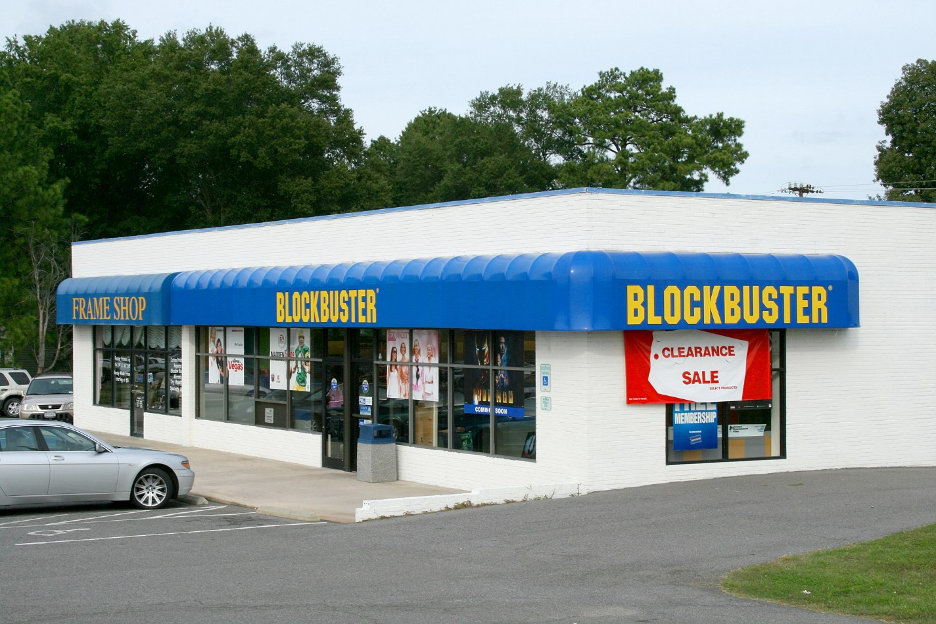
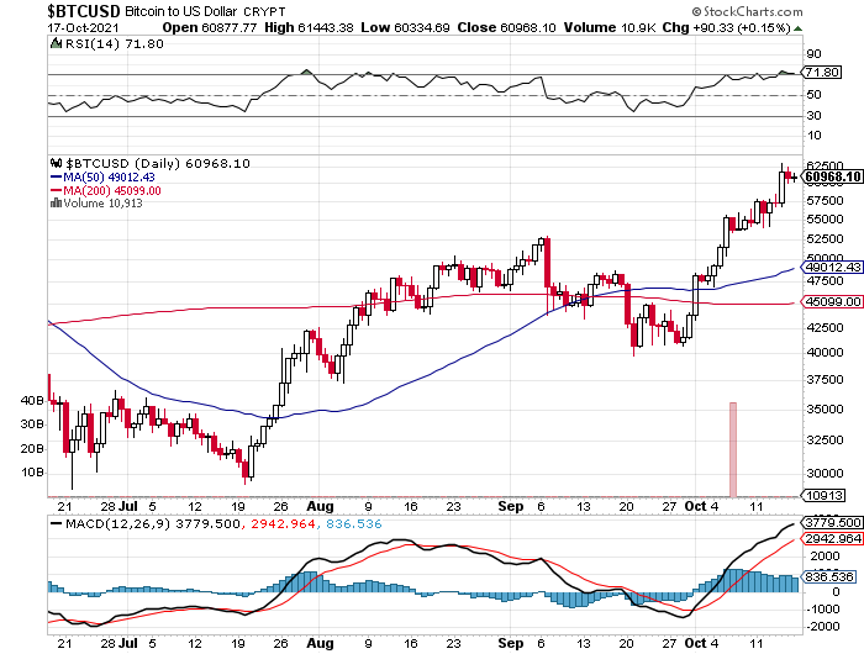
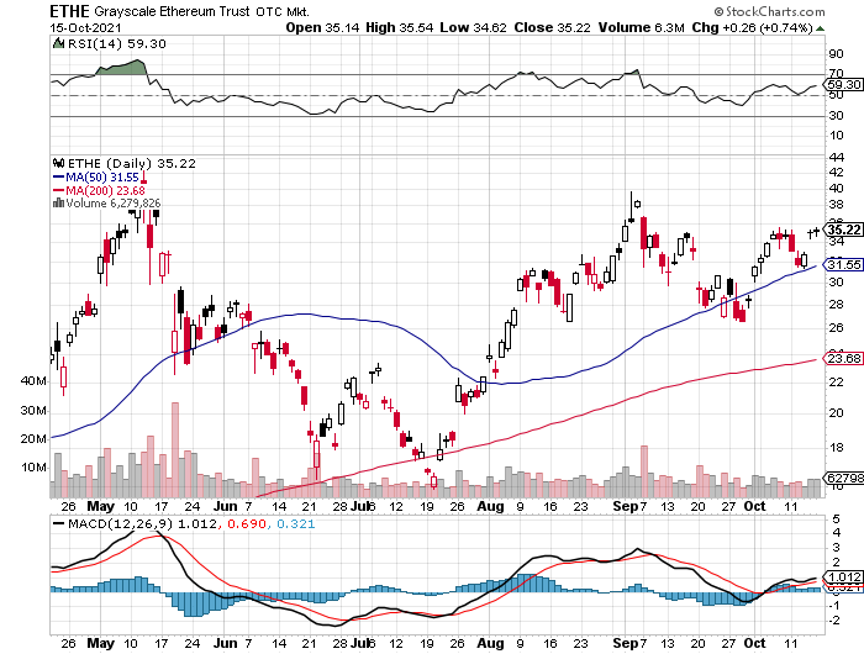

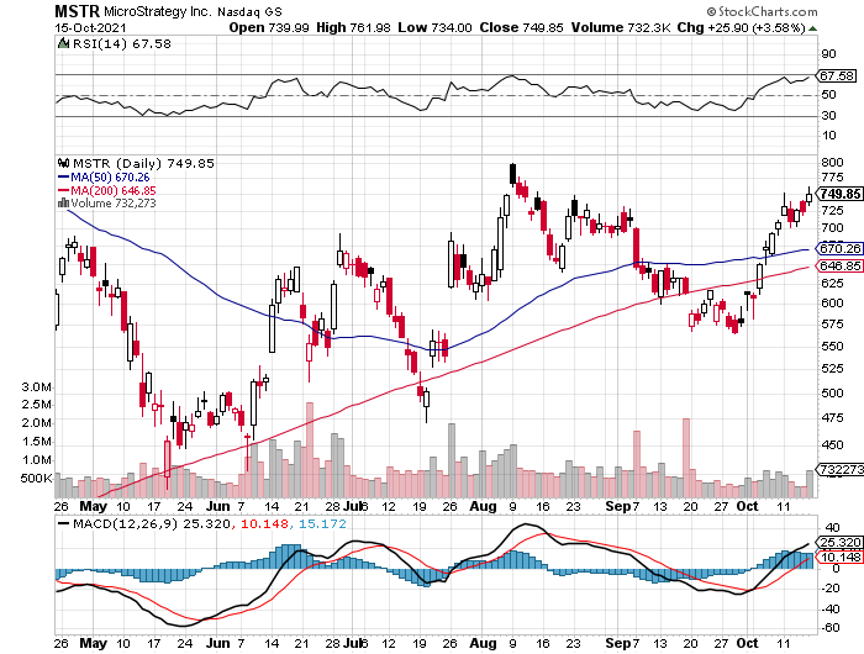
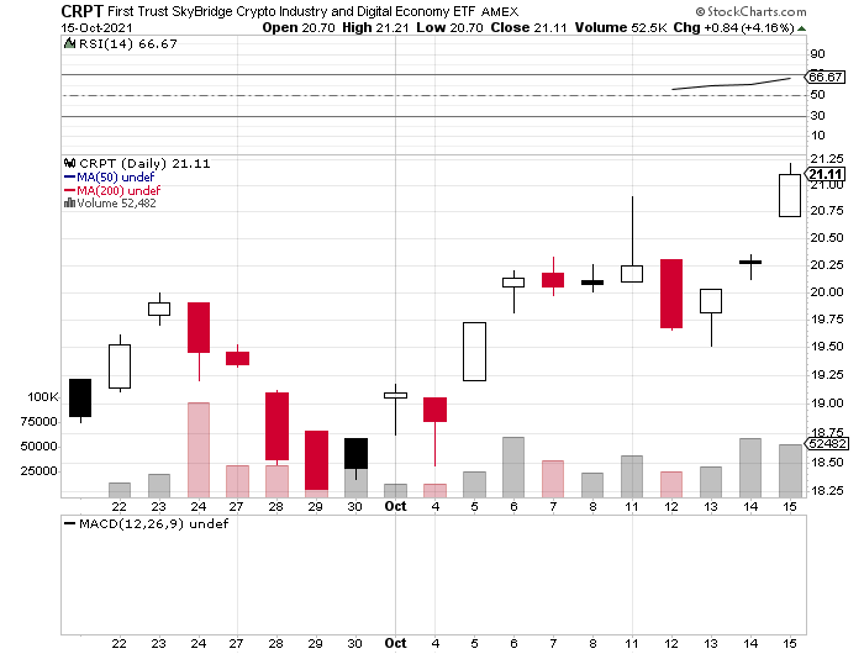
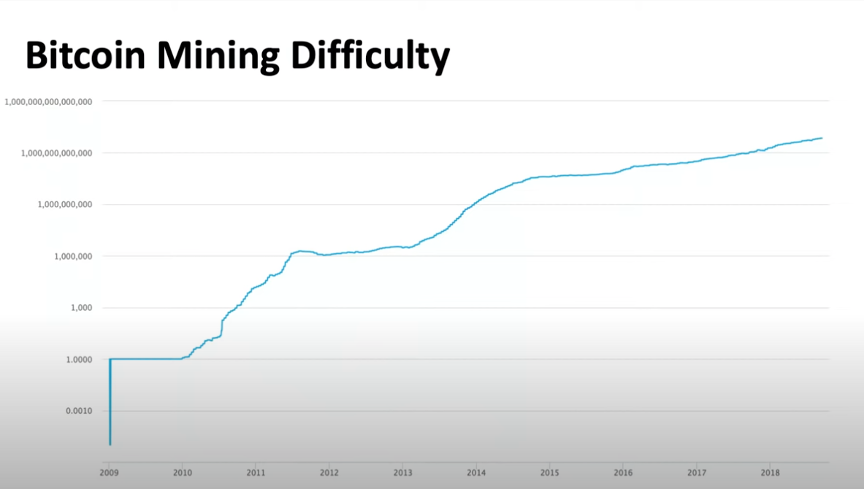
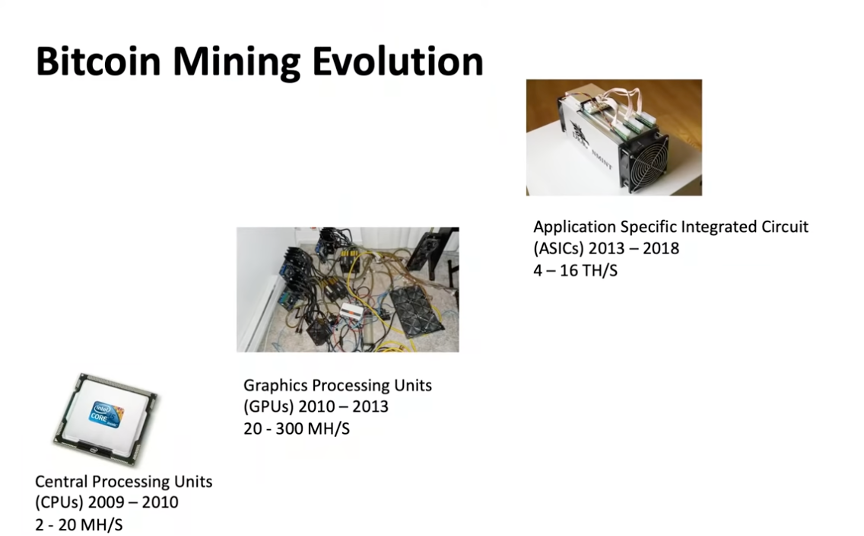
![]()
![]()
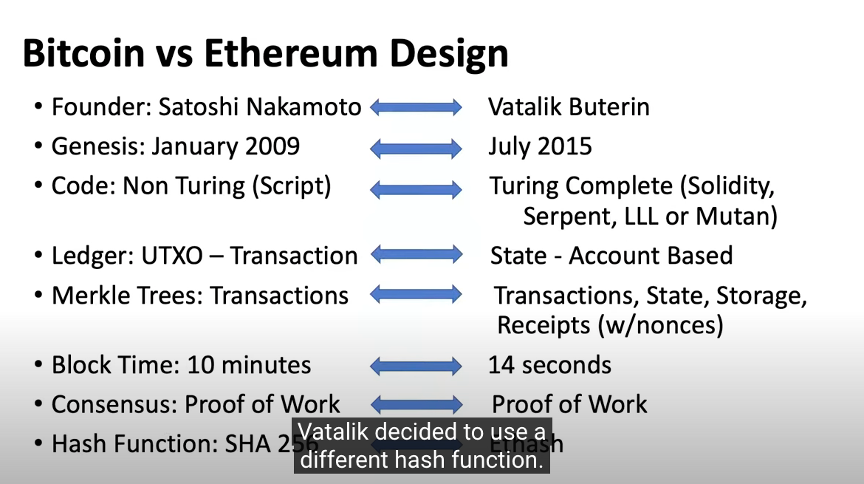
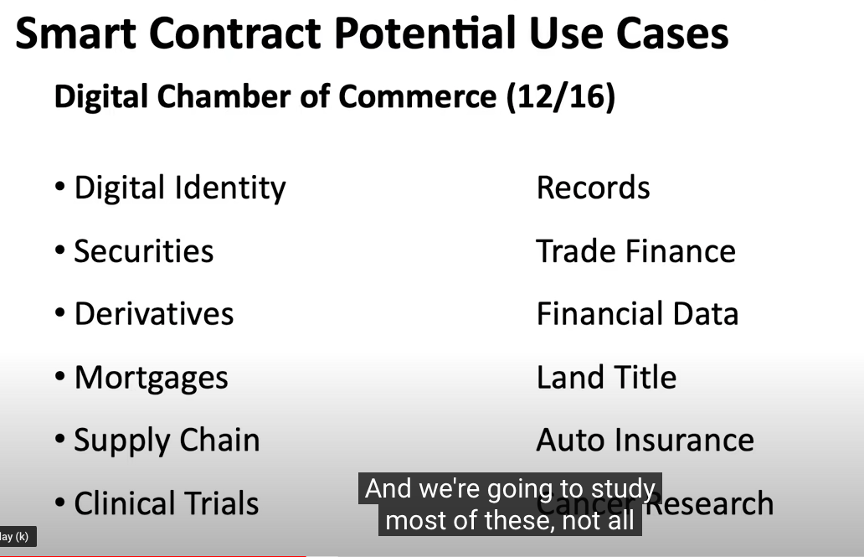

Mad Hedge Bitcoin Letter
September 21, 2021
Fiat Lux
Featured Trade:
(UNDERSTANDING THE FOG OF WAR)
(BTC), (MSTR)

One might postulate that the price of bitcoin and Chinese housing has no relevant correlation with each other.
Think again!
Granted, Chinese citizens aren’t denominating their mortgages in bitcoin to snap their ritzy Shanghai townhouses overlooking the Bund.
I don’t mean that.
But Bitcoin is an asset just like stocks, bonds, and commodities and is exposed to one-off events that shake out the financial system.
What’s brewing in the Middle Kingdom?
Chinese biggest property builder Evergrande teeters on the brink of financial devastation.
Add it up, Chinese bank deposits are $35 Trillion, more than 2x the US.
Would any Chinese financial crisis lead to an epic flight to fiat alternatives?
Does nobody recognize that this is a planned liquidity drain of the property market in China by the CCP?
All escape "exits" have already been shut. You can't even buy paper gold in China either - forget Bitcoin!
So I don’t believe that the potential disorderly selling of Chinese flats or the bust of a major property developer would end up boosting the price of Bitcoin because the Chinese government has made it abundantly clear that bitcoin is a red line for its citizens.
If there is a 20% dip in Chinese property prices — Chinese would believe that’s a once-in-a-century buy the dip type of event.
That doesn’t mean that some won’t try to sell on the down low and get their money out of China through hell or high water.
Some certainly will — China made it clear they didn’t want their citizens investing in overseas assets — I know of the odd millionaire spinning out a random credit card to put a down payment on a house in Vancouver.
What this does scream is policy error big time — an overtightening that could result in a hard landing that is ruinous for global growth.
That would be the worst-case scenario and I would put that at 10%.
Why is this company systemically important?
Evergrande was once China’s darling real estate developer. Now, it is gagging on debt.
It was founded in 1997 by Xu Jiayin. It has completed around 1,300 commercial, residential and infrastructure projects and supposedly employs upwards of 200,000 people.
The company’s success came because it was aligned perfectly for the parabolic boom in real estate that has been driven by the last two decades of staggering Chinese growth, a growth for a country that is unparalleled in all of modern human history.
The tragedy in all this is that 1.5 million Chinese have put deposits down on homes that haven’t been built and this is more often than not their entire life savings.
Most likely, it is them who will hold the bag and lose their deposit.
Better them than me.
For a soft landing to happen, the Chinese government must pull out all the bells and whistles.
Even though I categorize this as a quasi-gray swan, opposed to a solid black swan, it is highly likely that it won’t spill over into the broader market, and if we do get a large bitcoin dip, bitcoin buyers finally are gifted a cheaper price to enter bitcoin.
These opportunities are few and far between recently, at least in 2021, and I can guarantee that MicroStrategy CEO Michael Saylor is already ginning up his next bitcoin purchase usually done with his own companies’ corporate paper.
Limiting the fallout will be easily done if the Chinese government flood the right channels with liquidity, plugging the holes before they become unpluggable kinda like our own debt ceiling mess.
The larger issue is to ponder — is this the tip of the iceberg?
The silence and a lack of major actions from policymakers is making everyone nervous, but most likely they are sorting it out behind the scenes.
The response so far has been largely limited to the People’s Bank of China, which injected a net 90 billion yuan into the banking system. It added another 100 billion yuan on Saturday.
Evergrande has been mired in $300 billion worth of liabilities, more than any other property developer in the world. It’s a beast in China’s high-yield dollar bond market, accounting for about 16% of outstanding notes.
A lackluster response to an already expensive market could be costly, with real estate accounting for 40% of household assets in China. Data last week showed home sales by value slumped 20% in August from a year earlier, the biggest drop since the onset of the coronavirus early last year.
Isolating Evergrande is almost a point of emphasis for the Chinese Communist Party and the mission is to harangue them as a scapegoat for sky-high property prices.
They are the fall guy.
This is more of a political show than anything else — a show of power — letting the world know that this economic pain is nothing to even bat an eyelid about.
Bitcoin, perceived as a riskier asset along the risk curve, is not immune from a sell-off and a flight to safety has taken prices down around 10%.
I have full faith in the Chinese government and its authority to nip this in the bud, and around the $40,000 level, the price of Bitcoin should offer resistance.
If Bitcoin holds $40,000 and a resolution to this is announced, expect a 10% surge in Bitcoin prices.
This should not be treated as anything more than a standard 5% equity drop that is equivalent to a 10% crypto drop in prices.
Book some of those gaudy profits you made in the first half of the year to drop your cost basis while deploying capital at lower levels.
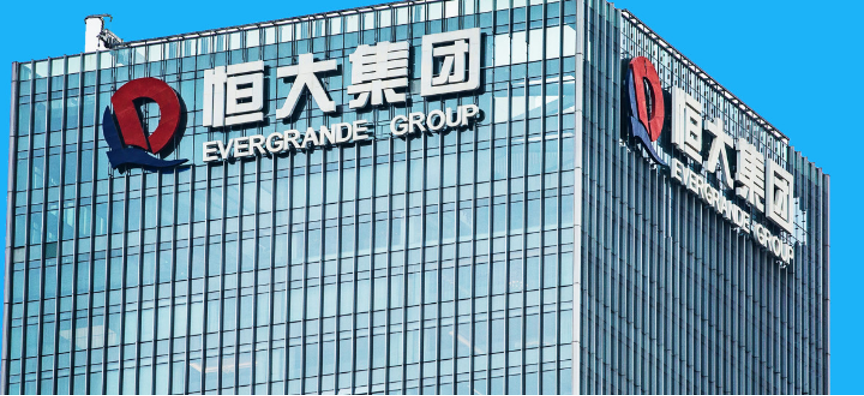
THE DEBT IS DUE!
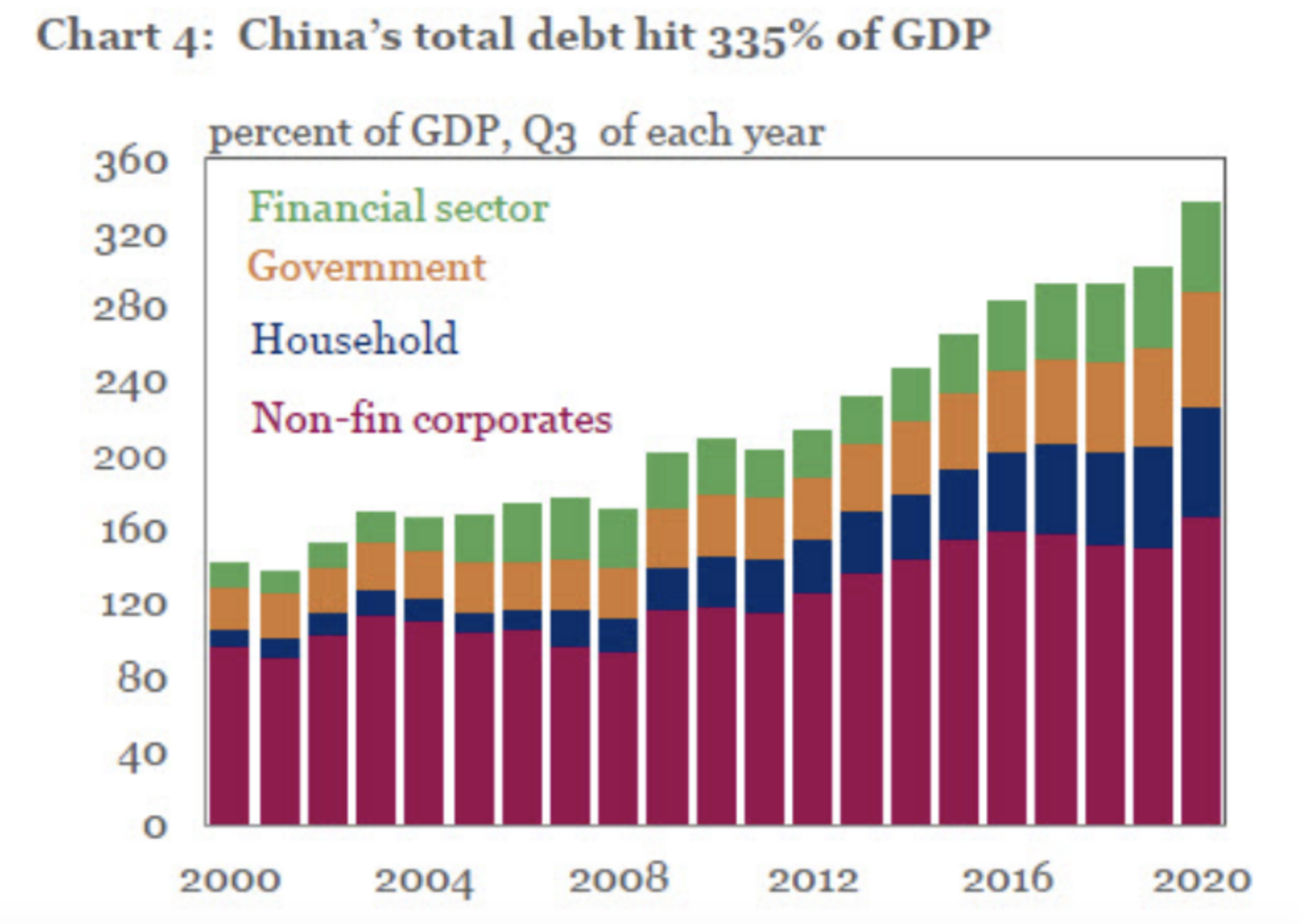
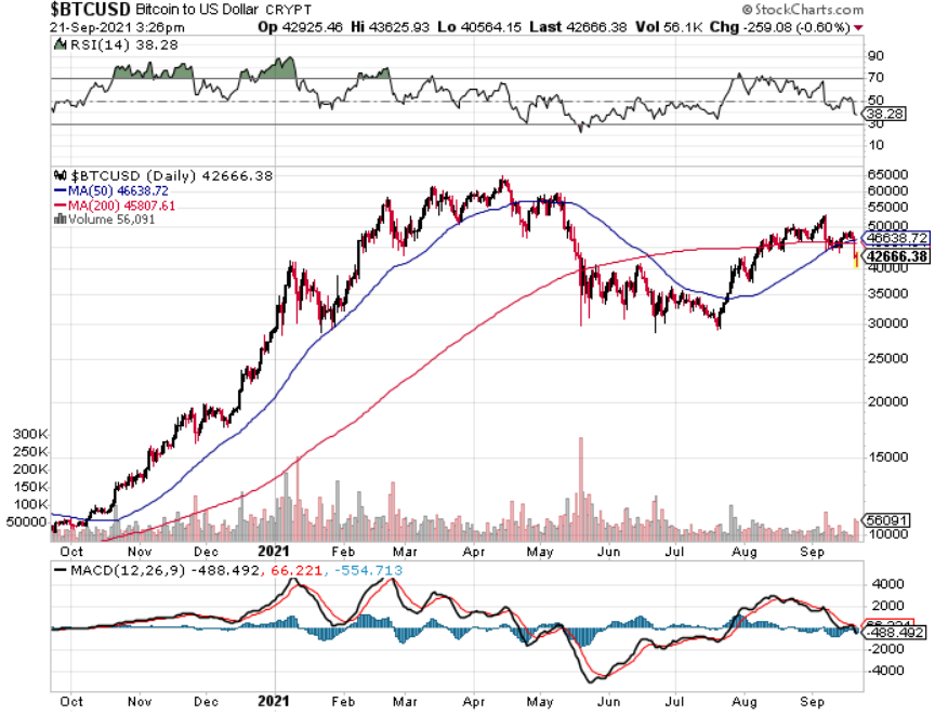
Global Market Comments
September 20, 2021
Fiat Lux
Featured Trade:
(INTRODUCING THE MAD HEDGE BITCOIN PLATINUM SERVICE),
(MARKET OUTLOOK FOR THE WEEK AHEAD, or THE BATTLE OF THE 50-DAY),
(SPY), (TLT), (DIS), (BLOK), (MSTR), (QQQ), (EEM), (UUP)

The next long-term driver of financial markets will be rising interest rates.
It’s not a matter of if, but when. Is it this month, or next month? One way or the other it’s coming.
Which means you should be rearranging your portfolio right now big time.
In a rising interest rate regime seven big things will happen:
1) Bonds (TLT) will collapse.
2) Domestic recovery and commodity stocks (FCX) will soar.
3) Technology stocks (QQQ) will move sideways to down 10%
4) The US dollar (UUP) craters
5) Foreign stock markets (EEM) do better than American ones.
6) Bitcoin (BLOK), (MSTR) and other cryptocurrencies go through the roof.
7) Residential real estate keeps appreciate, but at a slower rate.
These trends will continue for six months, or until long-term interest rates hit an interim peak, such as at 2.00%.
The delta variant gave us a secondary recession. Its demise will give us a secondary recovery, and the same sectors will prosper as with the first. According to the Johns Hopkins University of Medicine, this is happening right now.
The only caution here is that long-term investors should probably keep their technology stocks. Once rates hit the next interest rate peak again, it will be off to the races for tech once again. In the long term, tech always comes back, and tech always wins.
Of course, the major event of the coming week will be the Federal Reserve’s Open Market Committee meeting where interest rates are decided and the press conference with Jay Powell that follows.
Interest rates won’t move. It’s the press conference that is crucial, where we gain insights into the taper. What’s different this time is that the European Central Bank has already begun their taper with an economy far weaker than ours. Will Jay take the cue?
Far and away, the most reliable indicator for “BUY” timing since the presidential election has been the 50-day moving average for the S&P 500. Increasing stock weightings there and you were golden.
The problem now is that we have not seen the index close below the 50-day for two consecutive days for a record 221 days. This has not happened for 31 years.
We all know the reasons: Record low-interest rates making cash trash, seven years of quantitative easing, and a global liquidity glut. Exploding equity in homes and stock portfolios helps too. Still, 31 years is a long time to be this bullish.
I saw all this coming a mile off.
Since the election, I have relentlessly pursued this market with a super aggressive 100% weighting. Then I started paring back risk in June. In July and August, I cut back further to the bone, running minuscule 20% long weightings against a few shorts.
And this is how you manage your risk control.
When markets are rigged in your favor and the lunch is free, you bet the ranch. When they aren’t, you cower on the sidelines and watch others take insane risks.
But who am I to know? I’ve only been doing this for 51 years, and 58 years if you count the (IBM) shares I bought with my paperboy earnings.
Antitrust Comes Home to Roost at Apple, sending the stock down $9 in two days. A judge ruled that Apple will no longer be allowed to prohibit developers from providing links or other communications that direct users away from Apple in-app purchasing. Apple typically takes a 15% to 30% cut of gross sales. It’s a slap on the wrist, as Apple’s main revenue stream is still from iPhones. The judge ruled in favor of Apple on nine of ten other issues. It creates massive new opportunities for hundreds of other Silicon Valley start-ups. Still, if you were looking for an excuse to take profits, this is it. Buy (AAPL) on dips.
Tesla to get EV Tax Credit Restored in a new overhaul of alternative energy subsidies. Both Tesla (TSLA) and General Motors (GM) lost their $7,500 per car subsidies when sales topped 200,000. GM will get an extra $5,000 discount for union-made cars. Tesla is ferociously non-union. Maybe this explains the 36% rally since May. It should help (TSLA) get reach its million-vehicle target for 2021 if it can get enough chips. Buy (TSLA) on dips.
China Inflation Hits 13 Year High, up 9.5% YOY. Soaring commodity and coal prices are the issue. Coal is up 57% YOY, reflecting an energy shortage during the covid economic rebound. It predicts a hot CPI for the US on Tuesday.
The Consumer Price Index rose by 5.3% YOY and up 0.3% in August. It was a seven-month low, with delta clearly a drag. Food and energy came in lighter than expected. Prices for used cars, air tickets, and insurance fell. Stocks loved it, rising triple digits, and bond prices halved losses. St next week’s FOMC we’ll see how Jay really feels.
House Looking at a Top 26.5% Corporate Tax Rate, well up from the current 21% but not as high as the 28% that was feared. Capital gains would rise from 20% to 25%. The goal is to raise $2.5 trillion to get the $3.5 trillion spending package into law. It’s all a trial balloon for what might be possible. Stocks loved it.
Amazon to Hire 125,000 and boost wages to $18 an hour. They are also paying $3,000 signing bonuses and taking pay up to $22.50 in prime areas like New York and California. It’s all part of a strategy to make (AMZN) the “best employer in the world”. Buy (AMZN) on dips as its dominance on online commerce grows.
China Destroys Casino Stocks, threatening to increase oversight of their Macao operations. The concern is that China will pull the gaming licenses of foreign companies when they come up for renewal in June. Buy (WYNN) and (LVS) on the dip.
Weekly Jobless Claims Come in at 332,000, a new post-pandemic low. The previous week was revised down even lower, to 312,000. The end of pandemic unemployment benefits is no doubt a factor, driving people off of their couches and back to the salt mines. Is this the light at the end of the tunnel?
Bitcoin Charts are Showing a Golden Cross, which usually presages upside breakouts in the cryptocurrency. A golden cross is where the 50-day moving average pierces the 200-day to the upside. This is crucial because technicals are more important in crypto than in any other financial instrument. In the meantime, (AMC) has started accepting Bitcoin for online movie ticket purchases. Buy (MSTR) on dips.
My Ten-Year View
When we come out the other side of the pandemic, we will be perfectly poised to launch into my new American Golden Age, or the next Roaring Twenties. With interest rates still at zero, oil cheap, there will be no reason not to. The Dow Average will rise by 800% to 240,000 or more in the coming decade. The American coming out the other side of the pandemic will be far more efficient and profitable than the old. Dow 240,000 here we come!
My Mad Hedge Global Trading Dispatch saw a modest +1.10% loss so far in September following a blockbuster 9.36% profit in August. My 2021 year-to-date performance soared to 77.47%. The Dow Average is up 13.02% so far in 2021.
That leaves me 70% in cash, 10% short in the (TLT), and 20% long in the (SPY) and (DIS). Both of our September option positions expired at max profits.
I’m keeping positions small as long as we are at extreme overbought conditions. However, a Volatility Index (VIX) above $20 shows there may be a light at the end of the tunnel.
That brings my 12-year total return to 500.02%, some 2.00 times the S&P 500 (SPX) over the same period. My 12-year average annualized return now stands at an unbelievable 42.86%, easily the highest in the industry.
My trailing one-year return popped back to positively eye-popping 109.26%. I truly have to pinch myself when I see numbers like this. I bet many of you are making the biggest money of your long lives.
We need to keep an eye on the number of US Coronavirus cases at 42 million and rising quickly and deaths topping 673,000, which you can find here.
The coming week will be all about the Fed meeting on Wednesday.
On Monday, September 20, at 11:00 AM, the NAHB National Housing Market Index for September is out.
On Tuesday, September 21 at 9:30 AM, Housing Starts for August are printed.
On Wednesday, September 22 at 11:00 AM, Existing Home Sales for August are announced. At 2:00 PM, the Fed interest rate decision is released and an important press conference about taper issues follows.
On Thursday, September 23 at 8:30 AM, Weekly Jobless Claims are announced.
On Friday, September 24 at 8:30 AM, we learn US Durable Goods for August. At 2:00 PM, the Baker Hughes Oil Rig Count is disclosed.
As for me, with the shocking re-emergence of Nazis on America's political scene, memories are flooding back to me of some of the most amazing experiences in my life.
I have been warning my long-term readers for years now that this story was coming. The right time is now here to write it.
I know the Nazis well.
During the civil rights movement of the 1960s, I frequently hitchhiked through the Deep South to learn what was actually happening.
It was not usual for me to catch a nighttime ride with a neo-Nazi on his way to a cross burning at a nearby Ku Klux Klan meeting, always with an uneducated blue-collar worker who needed a haircut.
In fact, being a card-carrying white kid, I was often invited to come along.
I had a stock answer: "No thanks, I'm going to another Klan meeting further down the road."
That opened my driver up to expound at length on his movement's bizarre philosophy.
What I heard was chilling.
During 1968 and 1969, I worked in West Berlin at the Sarotti Chocolate factory in order to perfect my German. On the first day at work, they let you eat all you want for free.
After that, you get so sick that you never wanted to touch the stuff again. Some 50 years later and I still can’t eat their chocolate with sweetened alcohol on the inside.
My co-worker there was named Jendro, who had been captured by the Russians at Stalingrad and was one of the 5% of prisoners who made it home alive in 1955. His stories were incredible and my problems pale in comparison.
Answering an ad on a local bulletin board, I found myself living with a Nazi family near the company's Tempelhof factory.
There was one thing about Nazis you needed to know during the 1960s: They loved Americans.
After all, it was we who saved them from certain annihilation by the teeming Bolshevik hoards from the east.
The American postwar occupation, while unpopular, was gentle by comparison. It turned out that everyone loved Hershey bars.
As a result, I got free room and board for two summers at the expense of having to listen to some very politically incorrect theories about race. I remember the hot homemade apple strudel like it was yesterday.
Let me tell you another thing about Nazis. Once a Nazi, always a Nazi. Just because they lost the war didn't mean they dropped their extreme beliefs.
Fast-forward 30 years, and I was a wealthy hedge fund manager with money to burn, looking for adventure with a history bent during the 1990s.
I was mountain climbing in the Bavarian Alps with a friend, not far from Garmisch-Partenkirchen, when I learned that Leni Riefenstahl lived nearby, then in her 90s.
Attending the USC film school with a young kid named Steven Spielberg decades earlier, I knew that Riefenstahl was a legend in the filmmaking community.
She produced such icons as Olympia, about the 1932 Berlin Olympics, and The Triumph of the Will, about the Nuremberg Nazi rallies. It is said that Donald Trump borrowed many of these techniques during his successful 2016 presidential run.
It was rumored that Riefenstahl was also the onetime girlfriend of Adolph Hitler.
I needed a ruse to meet her since surviving members of the Third Reich tend to be very private people, so I tracked down one of her black and white photos of Nubian warriors, which she took during her rehabilitation period in the 1960s.
It was my goal to get her to sign it.
Some well-placed intermediaries managed to pull off a meeting with the notoriously reclusive Riefenstahl, and I managed to score a half-hour tea.
I presented the African photograph and she seemed grateful that I was interested in her work. She signed it quickly with a flourish.
I then gently grilled her on what it was like to live in Germany in the 1930s. What I learned was fascinating.
But when I asked about her relationship with The Fuhrer, she flashed, "That is nothing but Zionist propaganda."
Spoken like a true Nazi.
The interview ended abruptly.
I took my signed photograph home, framed it, hung it on my office wall for a few years. Then I donated it to a silent auction at my kids' high school.
Nobody bid on it.
The photo ended up in storage at my home, and when it was time to make space, it went to Goodwill.
I obtained a nice high appraisal for the work of art and then took a generous tax deduction for the donation, of course.
It is now more than a half-century since my first contact with the Nazis, and all of the WWII veterans are gone. Talking about it to kids today, you might as well be discussing the Revolutionary war.
By the way, the torchlight parade we saw in Charlottesville, VA in 2017 was obviously lifted from The Triumph of the Will, except that they didn't use tiki poolside torches in Germany in the 1930s.

Leni Riefenstahl

Olympia

Former Paperboy
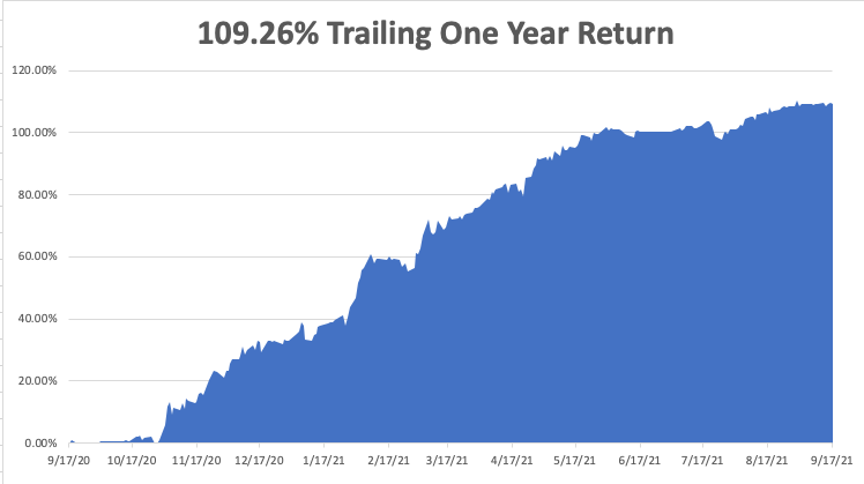
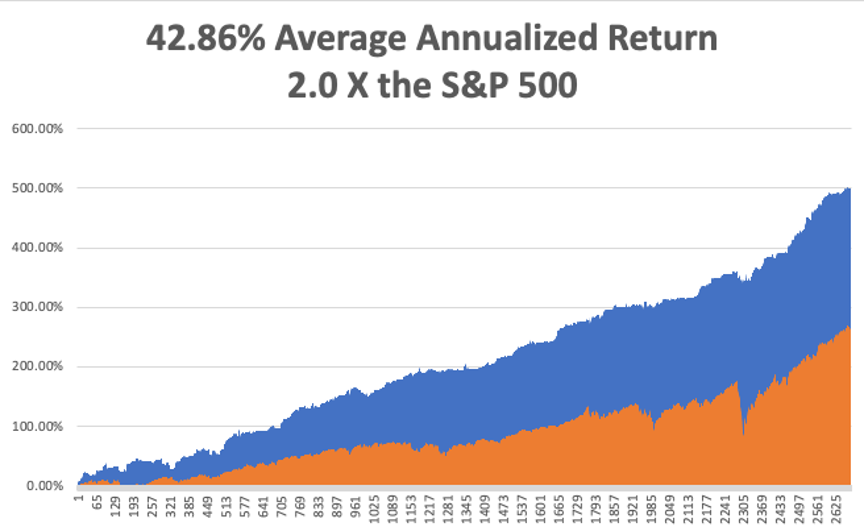
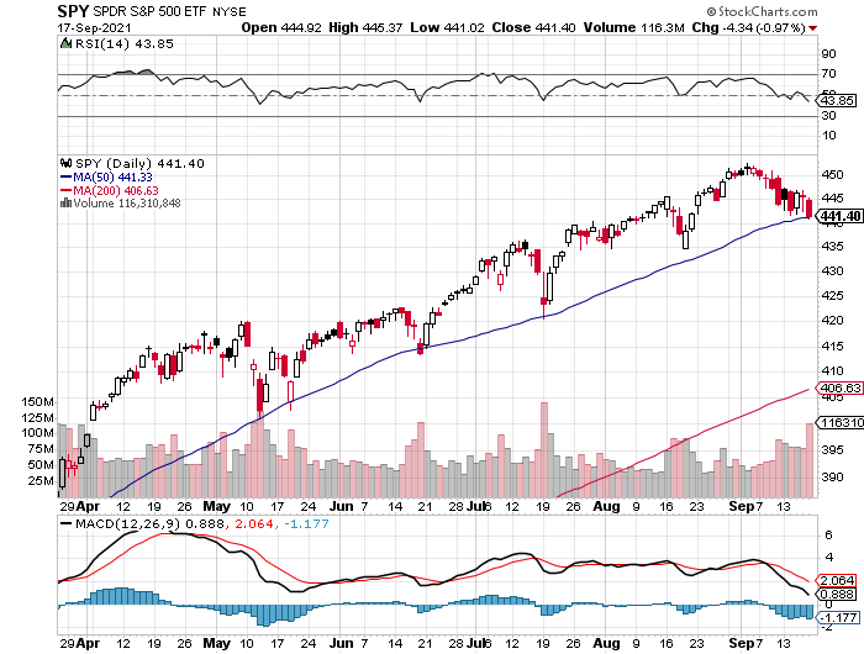
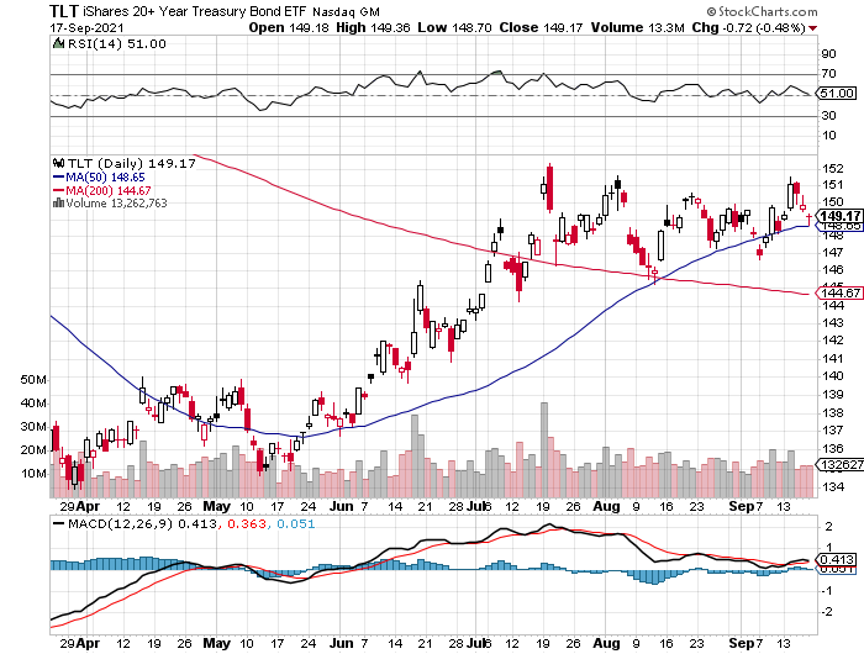

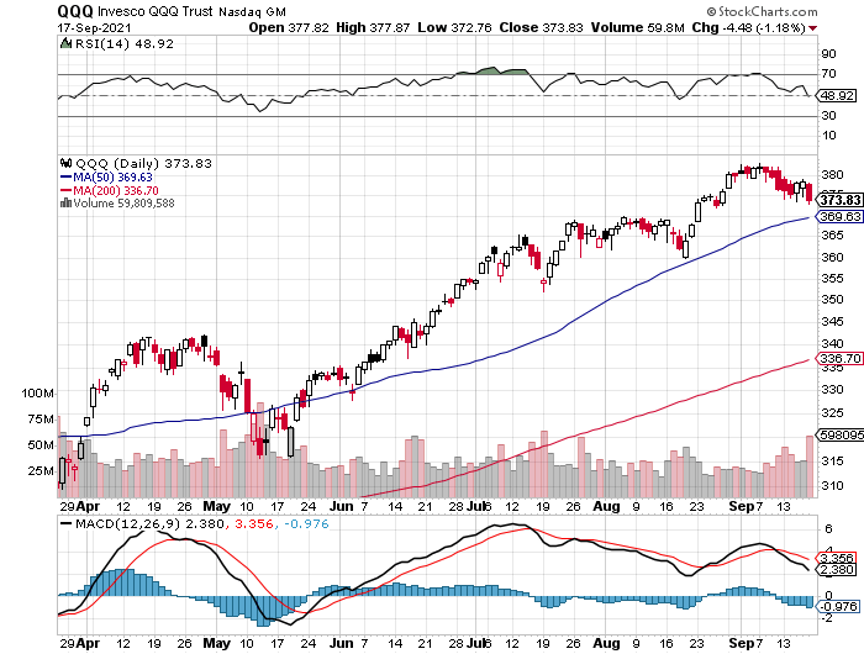

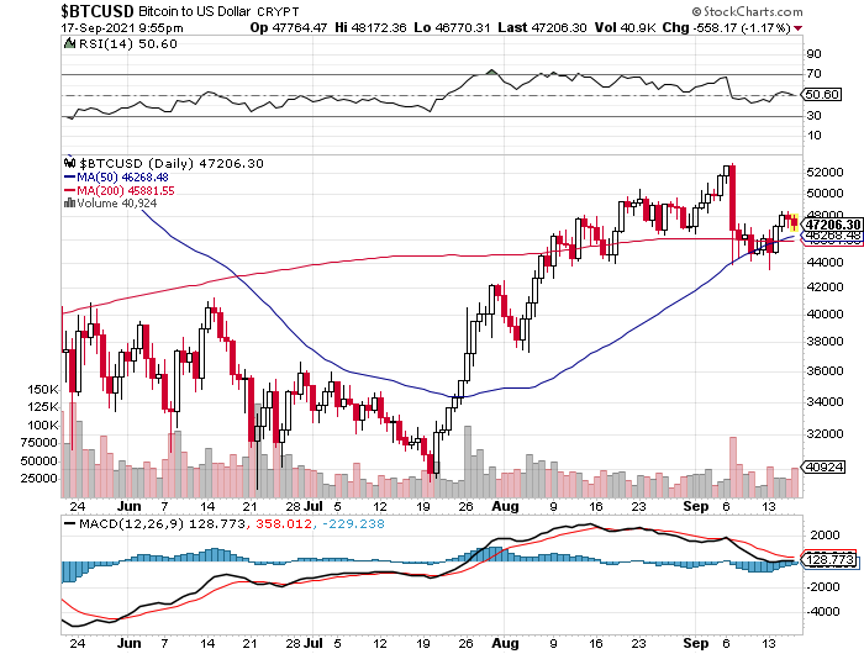
Global Market Comments
September 3, 2021
Fiat Lux
Featured Trade:
(LOOKING AT THE LARGE NUMBERS)
(TLT), (TBT) (BITCOIN), (MSTR), (BLOK), (HUT)

Mad Hedge Bitcoin Letter
September 2, 2021
Fiat Lux
Featured Trade:
(THE TRUTH ABOUT CRYPTOCURRENCIES AS AN ASSET CLASS)
(BLOK), (MSTR), (HUT)

It’s my responsibility to new readers of the Mad Hedge Bitcoin Letter to offer an imminent snapshot of where we are in the crypto universe at this point in time.
It would be negligent if I didn’t.
To say that Bitcoin is the only investment in the crypto sphere is also not true — sure, Bitcoin is the biggest, most trusted crypto network, and many have become grotesquely wealthy because of it — yet there are other altcoins out there.
Knowing what to digest and what to avoid like the plague is where I come in.
Don’t get me wrong — I am still highly bullish on Bitcoin as an asset, but we do not operate in a vacuum.
Many altcoins have been doing just as well as Bitcoin in the past month — Bitcoin is up 20%, and another 5% to $50,000 on Thursday.
Ethereum, for instance, had dropped below $3,200 on Monday. However, the second-largest crypto added more than $500 since then and up another 10% on Wednesday.
It hasn’t been this high since May and I can easily see it blowing by the May high of $4,200 before December.
As one might have assumed, lesser coins with cheaper pricing benefit/suffer from the law of small numbers with wider gaps in percentage change on up and down days.
It’s just the nature of the beast.
Overall, the second largest cryptocurrency by valuation performing well is a highly bullish signal for Bitcoin itself.
It also signals increasing adoption which is positive for the security and regulation of the broader asset class.
I subscribe to the “rising tide lifts all boats” theory in cryptocurrencies as it does more to legitimize the top asset than pull capital away from it.
The most poignant takeaway is that readers cannot just overlook other cryptocurrencies just because Bitcoin is the apex warrior.
Returning to the foundations, cryptocurrencies have a reputation for being difficult to understand, so don’t be embarrassed if you’re befuddled — I felt the same way the first day I tried to understand this stuff.
The Harris Poll earlier this year found that 61% of people who had heard of cryptocurrencies still had little or no understanding of how they work.
How Do I Buy Bitcoin?
Conventional wisdom has it that the most likely route is a Bitcoin online exchange.
Create an account — enter a payment method.
Reputable exchanges will require information such as bank account details or a debit or credit card.
Then proof of identity is required such as a driver’s license, ID, or passport.
After verification, purchase Bitcoin by transferring it to a personal hot wallet and buy and sell the asset!
Remember that these accounts coming directly from bitcoin brokers aren’t insured and aren’t secure.
Therefore, a better way to mitigate risk is by going through a Bitcoin ETF on the U.S. public markets with an official broker registered with the Security and Exchange Commission (SEC).
Not only do public stocks provide additional security as a bitcoin trading vehicle, but ETFs are an aggregation of crypto-asset tracking data points reducing the volatility even more.
Unregulated crypto exchanges come with a higher understanding of operational and systemic risk and not everyone wants to venture into the arid Wild West without a horse or water.
If you trade with an official brokerage registered with the SEC, you are covered by Federal Deposit and Insurance Corporation (FDIC) insurance up to $250,000 per account holder in a financial institution.
If there are joint owners, then the account is insured up to $500,000 ($250,000 for each owner).
The FDIC is a U.S. government agency so, in effect, these accounts are federally insured.
There is also another layer to this — you are covered by Securities Investor Protection Corporation (SIPC).
SIPC is a U.S. government creation but not an agency of the U.S. and insures all brokerage accounts up to $500,000, but only up to $250,000 for cash in such accounts that are intended to be used for securities transactions.
Cash in brokerage accounts only for the purpose of earning interest are not protected. While SIPC has been established by Congress, it is funded by all of its member broker/dealers.
In many cases, SIPC protects against unauthorized trading or theft in the account.
My favorite crypto ETF is Amplify Transformational Data Sharing ETF (BLOK) which has morphed into one of the best crypto ETFs on the market since its inception.
BLOK is an actively managed ETF that seeks to provide total return by investing at least 80% of its net assets in equity securities of companies actively involved in the development and utilization of blockchain technologies.
BLOK’s biggest two positions are Bitcoin proxy MicroStrategy (MSTR) and a Canadian crypto mining company called Hut 8 Mining Corp (HUT).
I have already shot out a MicroStrategy trade alert to new readers and am incredibly bullish on the company.
However, this ETF encompasses more than MSTR offering broader exposure to firms related to Bitcoin, crypto miners, and software companies that are heavily into crypto.
Hut 8 engages in industrial-scale bitcoin mining operations. It also owns and operates 38 BlockBoxes in Drumheller, Alberta, and 56 BlockBoxes in Medicine Hat, Alberta.
BlockBoxes are one of the most powerful and cost-effective bitcoin mining units available on the market.
BLOK doesn’t track bitcoin 1:1, but it does mimic the price action relatively closely albeit with less extreme swings.
Controlling excess volatility is something you should be happy about.
BLOK also has an expense ratio of 0.71% which isn’t too expensive for those who want to buy and hold the ETF and not trade the derivative.
Buying BLOK is most likely the best way to ensure safe trading under the framework of the SEC, but I understand others have a higher risk profile which is also welcome.
To understand more about the ETF BLOK, click here.
The crypto revolution is in its early stages and the possibilities are endless considering the adoption is just beginning.
However, we cannot just assume bitcoin will always lead the charge and taking note of what is happening in the rest of the industry offers us an even deeper insight into how the bellwether (bitcoin) is performing and reacting to the future challenges as top dog.
The truth is that there will be several winners from higher crypto prices and not just bitcoin. As a technology, blockchain will also be a massive winner from higher crypto prices.
Even if one does not want to profit from crypto, this will be the intellectual challenge of a lifetime.
Lastly, I’d like to reiterate my call for the price of Bitcoin at $66,000 by end of 2021 where it will test a double top.
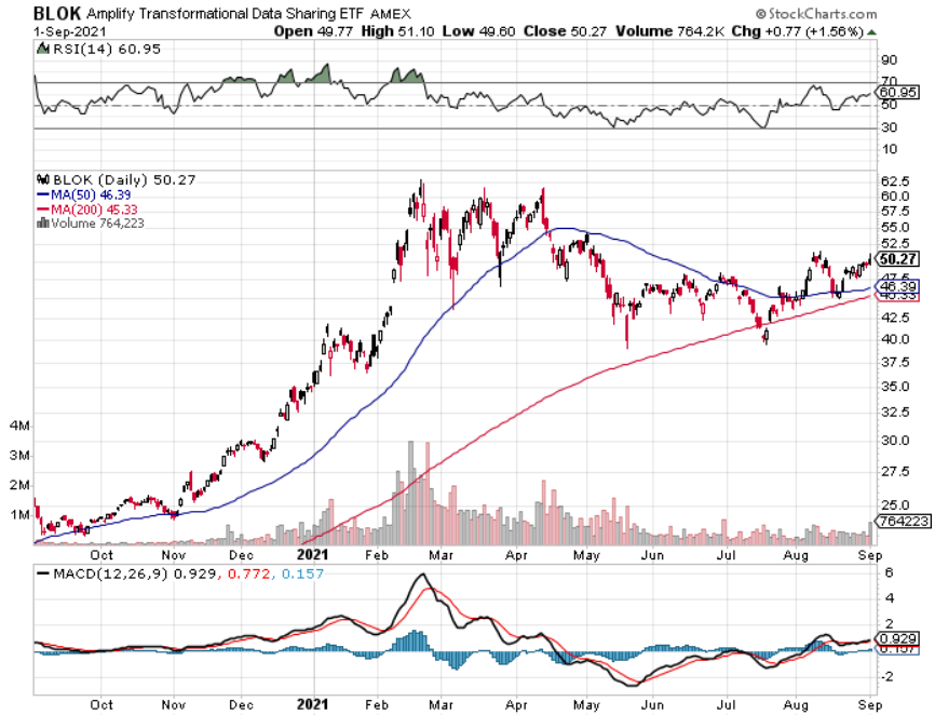
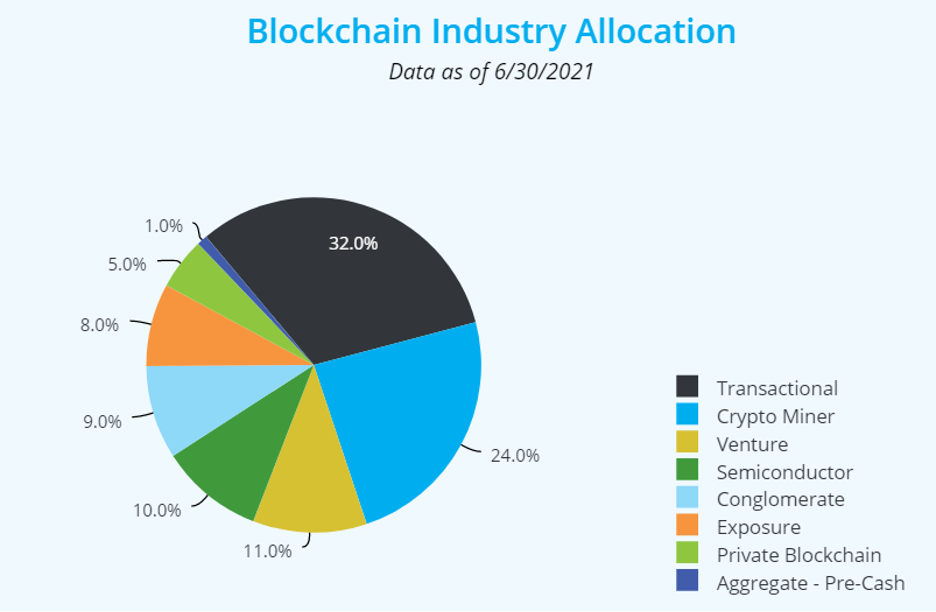
BLOK ETF INDUSTRY ALLOCATION
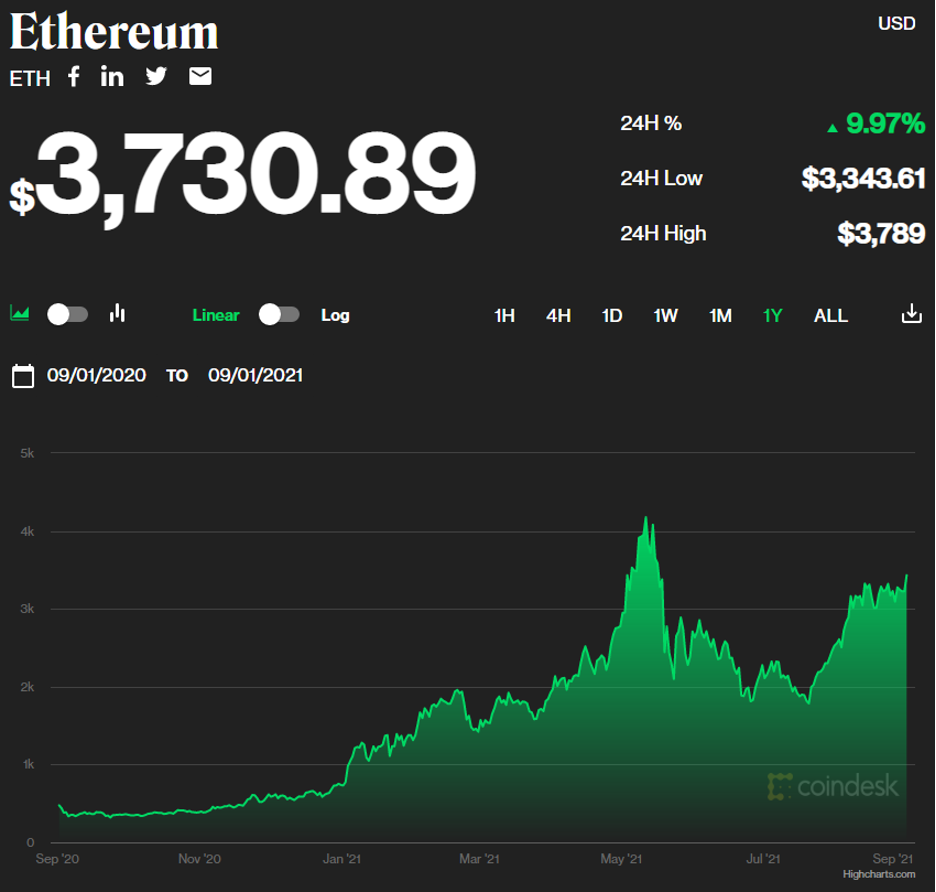
Legal Disclaimer
There is a very high degree of risk involved in trading. Past results are not indicative of future returns. MadHedgeFundTrader.com and all individuals affiliated with this site assume no responsibilities for your trading and investment results. The indicators, strategies, columns, articles and all other features are for educational purposes only and should not be construed as investment advice. Information for futures trading observations are obtained from sources believed to be reliable, but we do not warrant its completeness or accuracy, or warrant any results from the use of the information. Your use of the trading observations is entirely at your own risk and it is your sole responsibility to evaluate the accuracy, completeness and usefulness of the information. You must assess the risk of any trade with your broker and make your own independent decisions regarding any securities mentioned herein. Affiliates of MadHedgeFundTrader.com may have a position or effect transactions in the securities described herein (or options thereon) and/or otherwise employ trading strategies that may be consistent or inconsistent with the provided strategies.
This site uses cookies. By continuing to browse the site, you are agreeing to our use of cookies.
OKLearn moreWe may request cookies to be set on your device. We use cookies to let us know when you visit our websites, how you interact with us, to enrich your user experience, and to customize your relationship with our website.
Click on the different category headings to find out more. You can also change some of your preferences. Note that blocking some types of cookies may impact your experience on our websites and the services we are able to offer.
These cookies are strictly necessary to provide you with services available through our website and to use some of its features.
Because these cookies are strictly necessary to deliver the website, refuseing them will have impact how our site functions. You always can block or delete cookies by changing your browser settings and force blocking all cookies on this website. But this will always prompt you to accept/refuse cookies when revisiting our site.
We fully respect if you want to refuse cookies but to avoid asking you again and again kindly allow us to store a cookie for that. You are free to opt out any time or opt in for other cookies to get a better experience. If you refuse cookies we will remove all set cookies in our domain.
We provide you with a list of stored cookies on your computer in our domain so you can check what we stored. Due to security reasons we are not able to show or modify cookies from other domains. You can check these in your browser security settings.
These cookies collect information that is used either in aggregate form to help us understand how our website is being used or how effective our marketing campaigns are, or to help us customize our website and application for you in order to enhance your experience.
If you do not want that we track your visist to our site you can disable tracking in your browser here:
We also use different external services like Google Webfonts, Google Maps, and external Video providers. Since these providers may collect personal data like your IP address we allow you to block them here. Please be aware that this might heavily reduce the functionality and appearance of our site. Changes will take effect once you reload the page.
Google Webfont Settings:
Google Map Settings:
Vimeo and Youtube video embeds:
